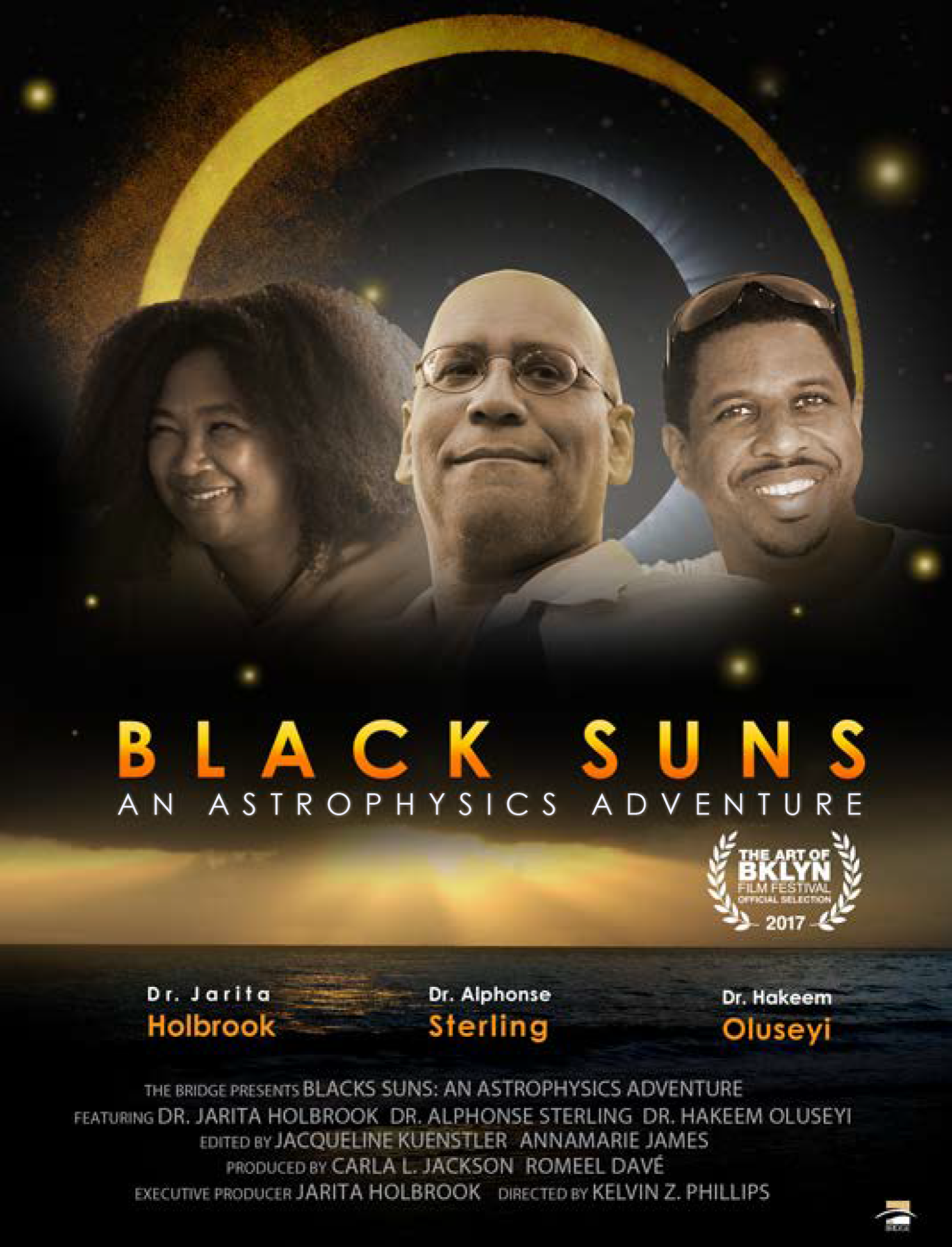Among the scores of scientists avidly awaiting the Aug. 21 “Eclipse Across America” — the first total solar eclipse to span the continental United States since 1918 — is Dr. Alphonse Sterling of NASA’s Marshall Space Flight Center in Huntsville, Alabama.
While Sterling is as excited about the upcoming event as any career astrophysicist devoted to the study of our turbulent star and its impact on our homeworld, he’s also one of just two eclipse experts to star in a current, feature-length documentary on the subject.
Sterling and Dr. Hakeem Oluseyi, a research professor at the Florida Institute of Technology in Melbourne, are the subjects of “Black Suns: An Astrophysics Adventure.” The documentary chronicles their travels in May and November 2012 to observe a pair of solar eclipses from vantage points in Tokyo, Japan, and in Cairns, Australia, respectively.
Designed to inspire young people to pursue STEM education — the fields of science, technology, engineering and math — “Black Suns” explores why Sterling and Oluseyi became scientists and recounts their struggles as minorities in a STEM field. It’s directed by New York filmmaker Kelvin Phillips and narrated by cultural astronomer Dr. Jarita Holbrook, a policy fellow in the National Science Foundation’s Office of International Science and Engineering.
“Black Suns,” which debuted June 9 at the annual Art of Brooklyn Film Festival in New York, was awarded the Jury Prize, the festival’s top honor. It will screen during the Capital City Black Film Festival Aug. 17-20 in Austin, Texas, and the BronzeLens Film Festival Aug. 23-27 in Atlanta.
Kindred spirits
For Sterling, who found his passion for astrophysics and solar studies in the late 1970s while studying physics at the California Institute of Technology in Pasadena, “Black Suns” was a logical extension of that passion.
A student of the Japanese language since college, he first visited that country in 1979, between semesters at Caltech. He returned from 1989 to 1991 for a postdoctoral research fellowship at Kyoto University in Kyoto, and for much of the 1990s he supported satellite and science operations for the Yohkoh mission, an orbiting solar X-ray and gamma-ray observatory. He returned to Japan again following the 2006 launch of the international solar probe Hinode, and worked at the Japan Aerospace Exploration Agency, conducting solar physics research and liaising between Japanese and American personnel.
It was during this period that Sterling and Oluseyi — who had become friends when the latter visited the University of Alabama in Huntsville — met Holbrook during an eclipse-watching trip to Ghana. Sterling and Holbrook realized they were both Caltech alumni. “There was an immediate connection,” he said. “Jarita had this crazy notion about making a documentary — and it snowballed!”
Holbrook’s pride in the film is self-evident. “This is the first documentary to focus on African-American astrophysicists doing solar eclipse physics, and the first time so many African-American scientists and students appear in one film,” she said. “During the 1980s, at most, there were 10 African-American students at Caltech at the same time, out of about a thousand undergraduates. We are the rarest of the rare.”
Plumes and jets
As “Black Suns” continues to garner acclaim, Sterling is already thinking ahead to the Aug. 21 eclipse. He plans to be in Idaho Falls, Idaho, studying phenomena called solar plumes — long, feathery jets of superheated plasma that erupt from the sun’s polar regions, sometimes extending 10-12 million miles into space.
“For some time now, astronomers at Marshall have been studying coronal jets, small-scale transient bursts of super-hot plasma occurring in the solar atmosphere,” he said. “I want to determine whether solar plumes are initiated and fed by these coronal jets.”
That work could have practical value worldwide. Findings by the Marshall team, led by Sterling and published in 2015, suggest coronal jets work analogously to larger-scale solar eruptions — the source of coronal mass ejections and solar flares — that are capable of disrupting Earth-based communications and threatening humans and hardware in space.
The rapid pace of solar discovery, and exciting national events such as the upcoming eclipse, keep the subject matter fresh and fascinating for Sterling. “There may not be much new under the sun, but there’s no end to what we can learn about the sun itself,” he said, studying eclipse data. “Even in those moments when it’s hidden from us.”
For more information about NASA’s “Eclipse Across America” campaign, visit:
Molly Porter
NASA’s Marshall Space Flight Center, Huntsville, Alabama
256-544-0034
molly.a.porter@nasa.gov



























